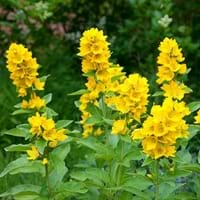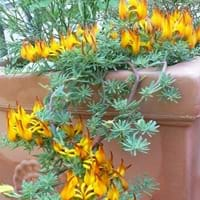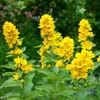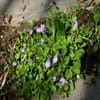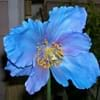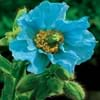Life Span
Perennial
Perennial
Origin
Eastern Europe, Turkey
Canary Islands
Types
creeping Jenny, L. ephemerum
Not Available
Habitat
damp broad-leaved forests, damp meadows, ditches, roadside embankments, shores, stream banks
Mediterranean region, mild coastal areas, shaded fields, Shaded sites, Well Drained
USDA Hardiness Zone
4-8
8-11
Sunset Zone
1a, 1b, 2a, 2b, 3a, 3b, 4, 5, 6, 7, 8, 9, 14, 15, 16, 17, 18, 19, 20, 21, 22, 23, 24
H1, 9, 15, 16, 17, 18, 19, 20, 21, 22, 23, 24
Habit
Upright/Erect
Prostrate/Trailing
Flower Color
Yellow
Red, Gold, Orange Red
Flower Color Modifier
Bicolor
Bicolor
Fruit Color
Not Available
Green
Leaf Color in Spring
Green, Dark Green
Gray Green, Silver
Leaf Color in Summer
Green, Dark Green
Gray Green, Silver
Leaf Color in Fall
Green, Dark Green
Gray Green, Silver
Leaf Color in Winter
Light Green
Light Green
Leaf Shape
Long Linear
Spine-edged leaves
Plant Season
Summer
Spring, Summer, Fall, Winter
Sunlight
Full Sun, Partial Sun, Partial shade
Full Sun
Type of Soil
Clay, Loam
Loam, Sand
The pH of Soil
Acidic, Neutral, Alkaline
Neutral, Alkaline
Soil Drainage
Well drained
Well drained
Bloom Time
Late Spring, Early Summer
Spring, Late Spring, Early Summer, Summer
Tolerances
Drought
Drought
Where to Plant?
Container, Ground, Pot
Ground
How to Plant?
Divison, Seedlings
Divison
Plant Maintenance
Medium
Medium
Watering Requirements
Keep the ground moist but not water-logged, Requires consistently moist soil
Water Deeply, Water in morning to avoid prompting diseases, Water more frequently during periods of extreme drought
In Summer
Lots of watering
Lots of watering
In Spring
Moderate
Moderate
In Winter
Average Water
Average Water
Soil pH
Acidic, Neutral, Alkaline
Neutral, Alkaline
Soil Type
Clay, Loam
Loam, Sand
Soil Drainage Capacity
Well drained
Well drained
Sun Exposure
Full Sun, Partial Sun, Partial shade
Full Sun
Pruning
Remove damaged leaves, Remove dead branches
Cut or pinch the stems, Remove damaged leaves, Remove dead branches, Remove dead leaves
Fertilizers
All-Purpose Liquid Fertilizer, organic fertlizers, slow-release fertilizers
All-Purpose Liquid Fertilizer, Apply N-P-K
Pests and Diseases
Slugs, Snails
Aphids, Blight, Fusarium root rot, Mealybugs, Mites, Powdery mildew, Red blotch
Plant Tolerance
Drought
Drought, Full Sun, Heat And Humidity
Flower Petal Number
Single
Single
Foliage Texture
Coarse
Fine
Foliage Sheen
Matte
Matte
Attracts
Birds, Butterflies, Hummingbirds
Aphids, Mealybugs, Mites, Spider Mites
Allergy
Skin irritation
Not Available
Aesthetic Uses
Showy Purposes
Borders, Formal Garden, Ground Cover
Beauty Benefits
Not Available
Not Available
Environmental Uses
Not Available
Air purification
Medicinal Uses
Astringent, Diarrhea, Dysentry, Gastrointestinal disorders
Not Available
Part of Plant Used
Whole plant
Not Available
Other Uses
Used for its medicinal properties
Used as Ornamental plant
Used As Indoor Plant
No
No
Used As Outdoor Plant
Yes
Yes
Garden Design
Groundcover, Mixed Border, Wildflower
Container, Hanging Basket, Mixed Border, Rock Garden, Wall
Botanical Name
LYSIMACHIA punctata
LOTUS berthelotii
Common Name
Yellow Loosestrife, garden loosetrife, garden yellow loosetrife
Parrot's Beak
Winged Pea
In Hindi
Yellow Loosestrife
Parrot's Beak
In German
Gilbweiderich
Papageienschnabel
In French
salicaire Jaune
Le Bec de perroquet
In Spanish
Lisimaquia amarilla
Pico de loro
In Greek
κίτρινο loosestrife
Ράμφος παπαγάλου
In Portuguese
Loosestrife amarelo
Bico do Papagaio
In Polish
żółty toje
Dziób papugi
In Latin
Yellow Loosestrife
Parrot rostri
Phylum
Anthophyta
Streptophyta
Class
Equisetopsida
Not Available
Family
Primulaceae
Fabaceae
Clade
Angiosperms, Asterids, Eudicots
Angiosperms, Eudicots, Rosids
Tribe
Not Available
Loteae
Subfamily
Not Available
Faboideae
Number of Species
Not Available
Season and Care of Yellow Loosestrife and Parrot's Beak
Season and care of Yellow Loosestrife and Parrot's Beak is important to know. While considering everything about Yellow Loosestrife and Parrot's Beak Care, growing season is an essential factor. Yellow Loosestrife season is Summer and Parrot's Beak season is Summer. The type of soil for Yellow Loosestrife is Clay, Loam and for Parrot's Beak is Loam, Sand while the PH of soil for Yellow Loosestrife is Acidic, Neutral, Alkaline and for Parrot's Beak is Neutral, Alkaline.
Yellow Loosestrife and Parrot's Beak Physical Information
Yellow Loosestrife and Parrot's Beak physical information is very important for comparison. Yellow Loosestrife height is 60.00 cm and width 120.00 cm whereas Parrot's Beak height is 20.30 cm and width 30.50 cm. The color specification of Yellow Loosestrife and Parrot's Beak are as follows:
Yellow Loosestrife flower color: Yellow
Yellow Loosestrife leaf color: Green and Dark Green
Parrot's Beak flower color: Red, Gold and Orange Red
- Parrot's Beak leaf color: Gray Green and Silver
Care of Yellow Loosestrife and Parrot's Beak
Care of Yellow Loosestrife and Parrot's Beak include pruning, fertilizers, watering etc. Yellow Loosestrife pruning is done Remove damaged leaves and Remove dead branches and Parrot's Beak pruning is done Cut or pinch the stems, Remove damaged leaves, Remove dead branches and Remove dead leaves. In summer Yellow Loosestrife needs Lots of watering and in winter, it needs Average Water. Whereas, in summer Parrot's Beak needs Lots of watering and in winter, it needs Average Water.
